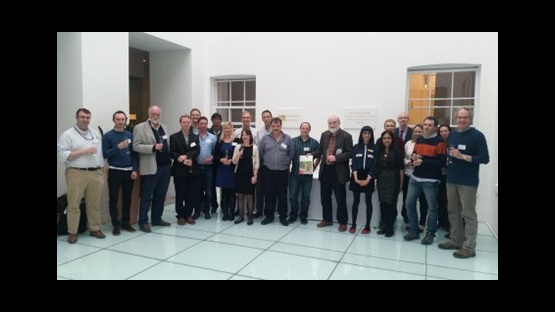Subject Editors, Publishing Editors, Editorial Board Members – there are so many different roles relating to scholarly publishing. But who is everyone? And, as an academic, how can you get involved with a journal yourself?

Scientific publishing can be a mystery, whether you’re in the process of submitting your first article, or whether you’ve already got a number of publications under your belt. The black-box of publishing can extend beyond what happens to your paper – even the different roles within a journal can be bewildering. To help, we have provided some guidance on the different editorial roles of a Royal Society journal and have outlined how you can get involved with each as an academic.
Academic roles
Editor-in-Chief
The role of an Editor-in-Chief (EiC) varies from journal to journal, but in general, the EiC is likely to have overall responsibility for the content published in the journal and its future editorial direction, and will also be involved in determining processes and policies. They may not look at or make decisions on every paper, but will be involved with any particular cases as needed.
Suitable role for an ECR? No, the Editor-in-Chief is appointed by the Publisher and will be a senior academic with lots of previous editorial experience and knowledge of the publishing landscape.
Subject Editor
Also known as: Section Editor, Topic Editor.
At the Royal Society, each journal is managed by an external Editorial Board, which is made up of leading academics in research areas covering the scope of the publication. The Subject Editors are responsible for a broad discipline, for instance chemistry or ecology. The Subject Editors manage a group of Associate Editors, who are grouped into their subject areas.
After passing editorial administrative checks, each newly submitted manuscript undergoes an initial top-level assessment by an Editorial Board Member to evaluate whether the work is suitable for the journal in question; ascertaining whether the work is within scope and of a sufficient standard. Depending on the journal, this initial triage step might fall to the Subject Editor or to a suitable Associate Editor—but in either case it is the Subject Editor who is responsible for the final decision. If a manuscript is then selected for peer review, then again it is the Subject Editor who is responsible for the final decision, typically following the recommendation of an Associate Editor.
Suitable role for an ECR? No, this role is typically given to senior academics who are likely to have lots of previous editorial experience. Subject Editors will have typically served on the Editorial Board of a journal as an Associate Editor, before being promoted by the Editor-in-Chief.

Proceedings B Subject Editors.
Associate Editor
Also known as: Handling Editor, Editorial Board Member.
As described above, a journal’s Editorial Board is largely made up of Associate Editors, who each sit within a subject area.
When a manuscript is selected for peer review it is the Associate Editors that are typically responsible for handling the process. Their job is to scrutinise the paper themselves (i.e., assess whether the science is technically sound) and also find an average of two independent reviewers to further evaluate the work. This can be a very tricky and time-consuming part of the Associate Editor role, as reviewers can be hard to find – academics are incredibly busy people, and understandably, volunteering to peer review a manuscript is not often a top priority. Once reviewers have been secured and their reports submitted, it is the Associate Editor’s job to make a recommendation for the paper based on the reviewers’ feedback and their own assessment of the work. As described above, this recommendation is then passed along to the Subject Editor for the final decision.
Suitable role for an ECR? Yes, although you will need to have sufficient experience as a reviewer in order to demonstrate that you are proficient in assessing manuscripts and feel comfortable reaching a recommendation. Additionally, good knowledge of the key researchers in your area and a strong network of colleagues is desirable for this role.
If you are interested in acting as an Associate Editor for a journal, we would recommend emailing the Editorial Office in question (or the Editor-in-Chief) to express your interest. Make sure that the journal you are interested in publishes within your research area, as it is important that you are an expert in the topic of the papers that are assigned to you.
You can find out more about what it’s like to join an Editorial Board here.

Members of the Biology Letters Editorial Board
Reviewers
On average, each paper submitted to a Royal Society journal is assessed by two reviewers in accordance with the publication criteria of the journal in question. This differs from journal to journal but, in general, reviewers are often asked to comment on technical soundness, originality, interest, scientific accuracy, and the appropriateness for the journal’s audience. Additionally, reviewers are commonly asked to check for any ethical concerns, as well as any supporting data that the authors have provided. Once a reviewer has provided their feedback, they will normally be asked to provide a recommendation for the paper (i.e., accept, revisions required, reject) for the Associate Editor.
Suitable role for an ECR? Yes, and there are a number of ways in which you can get involved. Firstly, you could search for a journal that publishes research within your area and email the Editorial Office to let them know that you are interested in reviewing. Sometimes journals have reviewer databases which they can add your name to (indeed, you can volunteer to review for the Royal Society on our website). What might be more beneficial however, is emailing an Associate Editor directly, since they are often the ones who select the referees. Find an Associate Editor who works in your area and let them know that you are available to act as a reviewer. Finally, let your supervisor know that you are keen to get involved in reviewing – many journals (including the Royal Society journals) allow co-reviewing, or your supervisor could request that the journal hand the paper directly along to you instead.
If you are asked to review a manuscript and aren’t sure where to start, we have written a couple of blogs (here and here) which may be of help.
Guest Editor
In addition to the research journals, the Royal Society also publishes three theme issue journals: Philosophical Transactions A, Philosophical Transactions B and Interface Focus. These journals publish collections of papers which each focus on a specific topic, and these are put together by a team of leading academics in the field (also known as Guest Editors). Together, the team of Guest Editors proposes a theme issue topic and then invites a number of authors to contribute to the issue. Once the papers are submitted, the Guest Editors are typically responsible for managing the peer review process (much like an Associate Editor), and also reach decisions on all of the submissions. The final product is a theme issue of between 12-16 papers on a particular topic which are all published together under the Guest Editors’ names.
Suitable role for an ECR? Yes. A Guest Editor team made up of one or two early career researchers and a couple of more senior academics is the perfect combination for a theme issue. This mix of researchers will ensure that there is sufficient editorial expertise within the team, as well as a couple of academics who perhaps have more time to manage the theme issue. If you are interested in guest editing for one of the Royal Society journals, you can find out more about the process on our website.
Editorial Office roles
Publishing Editor
Also known as: Publishing Manager, Editorial Manager, Commissioning Editor.
All of the academic roles above will be supported by the Editorial Office of a journal. The Editorial Office will be based at the publishing house of the journal and will work with editors, authors, reviewers, production staff, and marketing and sales teams to ensure that the journal is published on time and on budget. In addition to ensuring that the journal runs smoothly, the Publishing Editor is responsible for setting journal strategy, working on journal development, and acting as a secretary for the Editorial Board.
Editorial Coordinator
Also known as: Publishing Assistant, Editorial Assistant.
An Editorial Coordinator works with the Publishing Editor to ensure the smooth running of the journal. In a similar manner to the Publishing Editor, their role is to provide support to the stakeholders of the journal (i.e. authors, reviewers, editors) and to act as a point of contact for any journal issues.
Suitable roles for an ECR? No, working in an Editorial Office role is a full-time job and cannot be carried out by someone also involved in active research. That said, if you are ever interested in pursuing a career outside of academia, the scientific publishing sector might be perfect for you!
It is worth noting that the roles described here relate only to the typical journals in the Royal Society Publishing portfolio – other journals at other publishers are likely to have different names for these roles and different workflows. For example, some journals might not use Associate Editors at all. Additionally, the roles here relate to journals that use external Editorial Boards; there are some journals that have internal Editors and therefore operate without the support of an Editorial Board. If you are interested in working with a journal in an editorial role, it would be worth first researching how the journal operates.
To learn more about getting involved with publishing and developing your academic career, visit our Early Career Researcher hub.



